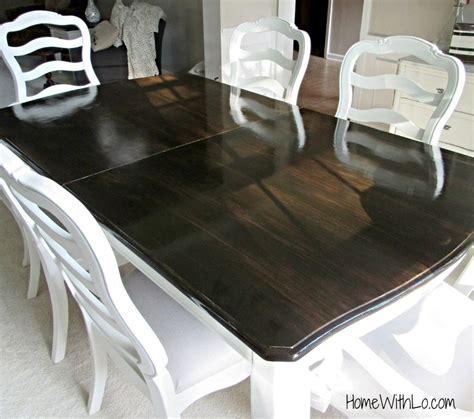Wood Veneer Table Top Refinishing Made Simple
Giving your wood veneer table top a new lease on life doesn't require a complete overhaul. With a little patience and the right techniques, you can achieve stunning results and breathe new life into a cherished piece of furniture. This guide provides a simple, step-by-step approach to refinishing your wood veneer table top, even if you're a beginner.
Why Choose Refinishing Over Replacement?
Before diving into the process, let's address the question many homeowners ask: why refinish a veneer tabletop instead of replacing it? The answer is multifaceted. Firstly, veneer tabletops, when properly cared for, can last for decades. Replacing them means discarding a potentially durable and valuable piece. Secondly, refinishing is significantly more cost-effective than purchasing a new table. Finally, refinishing allows you to preserve the unique character and history associated with your furniture.
Assessing Your Veneer Tabletop: What to Look For
Before you start, carefully examine your tabletop. Identify the extent of the damage. Are we talking about minor scratches and water rings, or more significant issues like peeling veneer or deep gouges? This assessment will guide your choice of refinishing methods.
Identifying the Veneer Type: Knowing the type of veneer (e.g., oak, cherry, maple) can help you choose appropriate stains and finishes later in the process.
H2: What Supplies Will I Need?
Gathering the right tools and materials is crucial for a successful refinishing project. Here’s a comprehensive list:
- Cleaning Supplies: Mild dish soap, warm water, soft cloths, tack cloth.
- Sandpaper: Various grits (120, 220, 320) – start with a coarser grit for heavier scratches and gradually move to finer grits for a smooth finish.
- Putty or Wood Filler: To repair any chips or gouges in the veneer. Choose a wood filler that matches your veneer's color as closely as possible.
- Stain (Optional): If you want to change the color of your tabletop. Test the stain on a hidden area first to ensure you like the result.
- Sealer: Protects the wood and creates a smooth surface for the finish.
- Finish: Polyurethane (water-based or oil-based) is a popular choice for its durability and ease of application.
- Brushes or Rags: For applying stain and finish.
- Safety Gear: Gloves, eye protection, and a well-ventilated area are essential.
H2: Step-by-Step Refinishing Process
Let's break down the refinishing process into manageable steps:
1. Cleaning: Begin by thoroughly cleaning your tabletop with warm water and mild dish soap. Remove any dirt, dust, or grime. Allow it to dry completely before proceeding.
2. Repairing Damage: Use wood filler to repair any chips or gouges. Let the filler dry completely, then sand it smooth with fine-grit sandpaper.
3. Sanding: Lightly sand the entire surface with fine-grit sandpaper (220-grit) to remove any imperfections and prepare the surface for staining or finishing. Always sand in the direction of the wood grain to avoid scratching.
4. Staining (Optional): Apply stain according to the manufacturer's instructions. Work in the direction of the wood grain. Allow the stain to dry completely before applying a sealer.
5. Sealing: Apply a sealer to protect the wood and create a smooth surface for the finish. Follow the manufacturer's instructions for drying time.
6. Finishing: Apply several thin coats of polyurethane finish, allowing each coat to dry completely before applying the next. Sand lightly between coats with very fine-grit sandpaper (320-grit) to ensure a smooth, even finish.
7. Final Cleaning: Once the final coat of finish is dry, use a tack cloth to remove any dust or debris.
H2: How Long Does Veneer Refinishing Take?
The total time required for veneer refinishing depends on the extent of the damage and the number of coats of finish applied. Expect the process to take anywhere from a few hours to a couple of days, allowing ample drying time between each step.
H2: Can I Refininsh a Damaged Veneer Tabletop?
Yes, even severely damaged veneer tabletops can often be refinished. However, extensive damage may require more advanced techniques, including veneer repair or replacement. For significant damage, consulting a professional may be beneficial.
H2: What are the Best Finishes for Veneer Tabletops?
Polyurethane remains a popular choice due to its durability and protection against water damage and scratches. Water-based polyurethane offers low odor and faster drying time, while oil-based polyurethane provides a harder, more durable finish.
Conclusion: A Renewed Tabletop
Refinishing your wood veneer table top is a rewarding project that can significantly enhance the beauty and value of your furniture. By following these simple steps and taking your time, you can achieve professional-looking results and enjoy your renewed tabletop for years to come. Remember, patience and attention to detail are key to a successful outcome.

